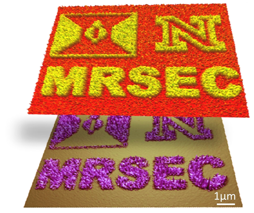The 267th MANA Seminar
Prof. Martin Pumera & Prof. Alexei Gruverman
| Date | June 8, Friday |
| Time | 15:30-17:00 |
| Place | Auditorium, 1F, WPI - MANA Bldg., NAMIKI Site, NIMS |
Download PDF file for seminar info.
15:30-16:15
Electrochemistry of Graphene
Electrochemical applications of graphene are of great interest to many researchers as they can potentially lead to crucial technological advancements in fabrication of electrochemical devices for energy production and storage, and highly sensitive sensors. There are many routes towards fabrication of bulk quantities of graphene based materials. Each of them yields different graphene materials with different functionalities and structural defects. Here, we discuss and compare the electrochemical properties of graphenes varying several parameters in their preparation, such as: i) various reduction methods; here we compare five different chemically modified graphenes: graphite oxide, graphene oxide, thermally reduced graphene oxide, chemically reduced graphene oxide, and electrochemically reduced graphene oxide. ii) various methods for oxidation of graphite to graphite oxide, such as Staudenmaier, Hofmann and Hummers methods. iii) graphenes with opened and closed edges. We always characterize these materials in detail using transmission electron microscopy, Raman spectroscopy, high-resolution X-ray photoelectron spectroscopy, electrochemical impedance spectroscopy, and cyclic voltammetry; this allows us to correlate the electrochemical properties with the structural and chemical features of the CMGs. Our findings have a profound impact for the applications of chemically modified graphenes in electrochemical devices.
Speaker
Prof. Martin Pumera, Division of Chemistry & Biological Chemistry, School of Physical and Mathematical Sciences, Nanyang Technological University, Singapore
Chair
Dr. Lok Kumar Shrestha, ICYS-MANA Researcher, MANA, NIMS
16:15-17:00
Nanoscale Switching Behavior and Electronic Properties of Ultrathin Ferroelectric Structures

Over the last several years the field of ferroelectric and multiferroic oxides has been experiencing a significant revival. This is largely due to recent experimental advances allowing characterization of their functional properties down to the nano- and atomic scale. Specifically, Piezoresponse Force Microscopy (PFM) proved to be an indispensable tool for high-resolution characterization of ferroelectrics. Although, the standard implementation of this technique has been around for almost 15 years, recent years have witnessed the development of advanced modes of PFM such as resonance-enhanced PFM, stroboscopic PFM, switching spectroscopy PFM and so on. This lecture will focus on application of the advanced PFM modes to investigation of the dynamic switching and electronic properties of ferroelectric nanostructures. This will include critical polarization behavior in single-crystalline ultrathin (in the range from 6 to 24 unit cells) BaTiO3-based heterostructures, polarization-driven tunneling electroresistance effect and electric modulation of magnetization in layered ferroelectric-ferromagnetic heterostructures. The structural disorder effect on domain switching dynamics in ferroelectric polymers will be discussed as well.
Speaker
Prof. Alexei Gruverman, Department of Physics and Astronomy, University of Nebraska-Lincoln, USA
Chair
Dr. Kenji Kitamura, Group Leader, Polar Domain Engineering Group, NIMS








